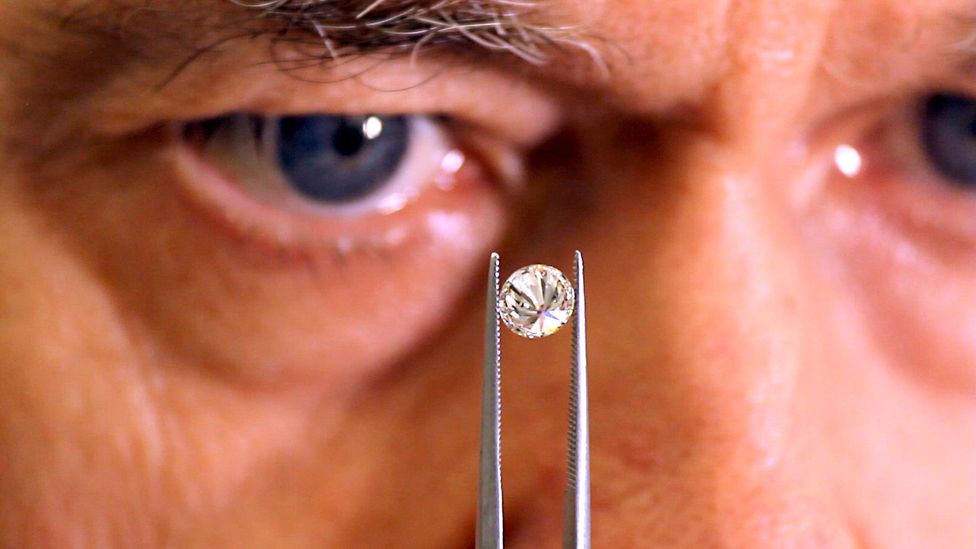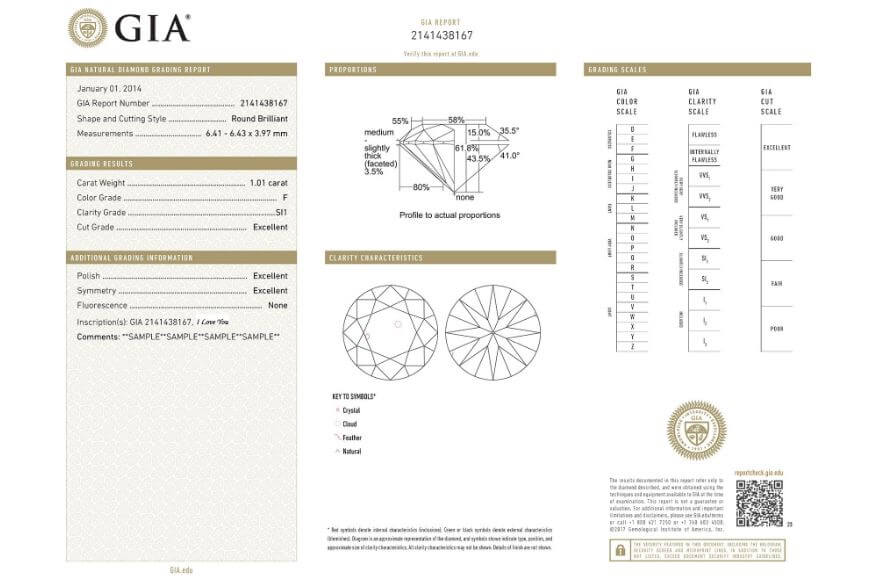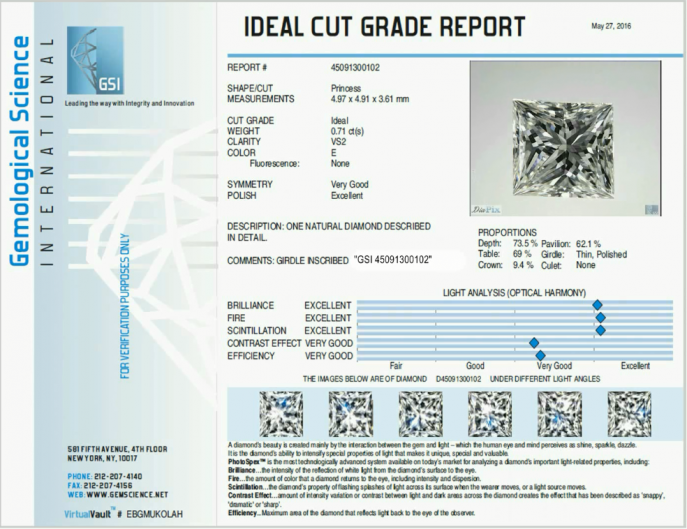Diamond Graders play an essential part of the diamond industry. From one-carat solitaires to rare two-carat diamonds, diamond graders must possess an expert eye when it comes to assessing the value and quality of these precious stones. To help you navigate through the complex world of diamond graders, we have put together this ultimate guide.
Have you ever wondered what it takes to become a diamond grader? This guide will explain everything you need to know about diamond graders, from the skills and qualifications required, to the importance of accuracy and consistency when grading diamonds.
What is a Diamond Grader?
Diamond grader is a professional brought in to assess the quality and worth of diamonds. The profession requires expert knowledge, extreme attention to detail, and commitment to accuracy in grading diamonds. Graders must be certified by organizations such as the Gemological Institute of America (GIA), and they use specific tools such as microscopes and loupe magnifiers to gauge the carat weight, cut, clarity, and color for every diamond they grade.
Assessing diamond quality is a complicated, important process that differs depending on the type of stone being graded. For uncut stones, the grader will look at the surface quality, crystal patterns, and shape for anomalies. When grading cut diamonds, color and clarity assessments become much more precise. Using special equipment and established evaluation standards, diamond graders are able to accurately determine a given diamond’s set of standards from the four categories and assign it an appropriate grade.
These ratings determine the diamond’s value and help buyers make informed decisions when purchasing a loose stone or jewelry piece.
Furthering their qualifications, diamond graders are often certified by one of several respected organizations such as the Gemological Institute of America (GIA). The GIA is a leader in education and research specific to diamonds and other precious stones. Those who graduate from its esteemed Color and Clarity Grading Lab course join an elite group of individuals trained to identify unique characteristics within diamonds that most jewelers are unable to detect through the naked eye.
With certification you can trust, diamond graders offer assurance that a stone’s quality rating is accurate without any hidden gemological secrets.
Understanding Cut, Color, Clarity, and Carat Weight Grading Systems for Diamond Graders
The primary purpose of diamond grading is to determine the cut, color, clarity, and carat weight of a diamond. The cut grade indicates the shape and polish, with the most common cuts being round-brilliant, oval, pear-shaped, princess-cut, and emerald. Color is graded on a scale from D (colorless) to Z (light yellowish or brownish). Clarity grading examines the degree of inclusions within a diamond on a scale from F (flawless) to I3 (inclusion visible to the naked eye). Carat weight determines how much a diamond weighs.
It’s important for diamond graders to be knowledgeable in all of these grading systems, as well as specific flatness, symmetry and polish criteria. Graders must also exercise their observational skills to identify breaks and fracture-filled diamonds. Using standard diamond grading methodologies, such as the AGS Diamond Quality System or GIA 4C Methodology, a trained diamond grader is able to accurately ascertain the worth of diamonds.
Ultimately, diamond graders fulfill an invaluable role in helping ensure that consumers are provided with diamonds of the highest quality possible.
A well-trained diamond grader is able to accurately assess a diamond’s characteristics, such as cut, color, clarity and carat weight. Cut refers to a diamond’s proportions and the overall shape of its facets when viewed from the crown. Color grading encompasses how similar the diamond is to a flawless white stone or how faint its hue might be. Clarity focuses on the presence of stress fractures, feathering and internal inclusions. Carat denotes the mass of a diamond; with each carat representing 200 milligrams of pristine material.
The tagline ‘four Cs’ – referring to cut, color, clarity and carat weight – is particularly helpful when identifying key characteristics necessary for assessing quality jewelry diamonds.
Different Organizations That Grade Diamonds
Diamonds can be graded by multiple organizations and laboratories, including the Gemological Institute of America (GIA), American Gem Society (AGS), International Gemological Institute (IGI), and European Gemological Laboratory (EGL). These laboratories use standardized protocols to grade diamonds according to their four Cs—color, clarity, cut, and carat weight. Each lab provides an independent certificate documenting the results of its diamond assessment.
GIA is the oldest and most widely respected laboratory, providing diamond grading reports for more than 10,000 stones each day. They maintain one of the world’s largest libraries of diamonds, allowing them to issue laboratory reports that document a diamond’s characteristics with precision. AGS adopted a concise 0-10 grading scale for Cut and Color to give consumers a straightforward way to evaluate diamonds.
IGI provides an array of independent diamond certification services including appraisal tests and magnified video inspections to guarantee that each certified diamond is accurately graded. Lastly, EGL grades diamonds using consistent criteria according to both international standards and regional market preferences.
While GIA, AGS and IGI are the most well-known diamond graders in the US, EGL also ranks high on the list. These organizations have strict guidelines and refined technology to grade diamonds accurately, taking into account color, clarity, carat weight and cut for each stone before issuing a final report. As such, these reports act as excellent guides for consumers who wish to purchase certification quality diamonds.
The Benefits of Choosing a Certified Diamond Grader
Professional diamond graders are certified experts who can accurately assess a diamond’s value. Certified diamond graders have gone through extensive training and have been tested in order to demonstrate their knowledge and expertise in the field. When you decide to purchase a diamond, it’s important to know that it has been graded properly by a professional. Certified diamond graders not only provide accurate and reliable grading information, but also offer valuable advice on how to select the best stone for your needs.
One of the main benefits of using a certified diamond grader is that you will have confidence in knowing that the stone is properly evaluated. Grading diamonds is a highly skilled and technical job, and only the experts with years of experience can do it accurately. Certified diamond graders use specialist tools to measure facets and make sure each stone meets its required quality standards.
When you choose a diamond graded by a qualified grader, you can be sure that what you’re buying is exactly as advertised. Get peace of mind with a certified diamond purchase from an expert!. Once you understand the importance of Diamond Grader, your job in vetting the right one gets easier.
Purchasing diamonds can be an intimidating process as they come with a hefty price tag. Regardless of the diamond’s grade or clarity, it is important to have peace of mind when investing in such an expensive item. A certified diamond grader has the knowledge and experience required to accurately define and grade diamonds. With their expertise, you can trust that the diamond’s quality matches what is stated on the certificate – ensuring that your purchase is worth every penny.
Professional Tools Used By Diamond Graders
Professional diamond graders use specialized tools to assess diamonds and grade them accurately. They may use a microscopic loupe, which is a magnifying device with 10x magnification. This is to observe the stone’s inclusions or blemishes. Additionally, graders may use light performance machines to measure the brilliance of the diamond and detect any optical aberrations. Graders will also inspect the stone under ultraviolet light to examine its fluorescence. Also to evaluate any color variations that might affect its value.
Diamond graders use different forms of equipment in order to come to an accurate assessment. Graders may also use diamond scales to measure the carat weight of a stone, as well as spectrometers. This will measure the colour and clarity grades of a diamond accurately. They can also use laser inscription equipment to inscribe identification numbers on diamonds.
Numbers such as their GIA grading certificate number – so they can be tracked in the future. Using professional tools, graders are able to make sure that diamonds meet industry standards and deliver accurate assessments.
Professional graders use a variety of tools and equipment to accurately assess the quality and characteristics in a diamond. High-powered microscopes, for example, enable the user to inspect the stones under magnification. It uses 10x magnifiers to check for inclusions. Electronically operated loupe reading pads are also used to help identify color gradings. It can determine the purity grade of a diamond.
Digital calipers measure the diameter, depth, and thickness of diamonds. It will be weighing scales measure carat weight, with accuracy down to 1/100th of a carat. Refractometers are used to calculate refractive index – one of the important factors that go into assessing clarity. Gemologists may use thermal conductivity probes or ultraviolet lamps to test if a stone is synthetic or natural.
Diamond Graders Job
Diamond grading is a highly specialized field that requires a keen eye for detail and extensive knowledge of gemology. They are responsible for examining diamonds to determine their quality. Based on criteria such as color, clarity, cut and carat weight. These professionals work in various settings, including diamond grading labs, jewelry stores and auction houses.
Being a diamond grader requires a high level of expertise and training. Most diamond grading jobs require at least a bachelor’s degree in gemology or related fields. Additionally, many employers prefer candidates with certifications from reputable organizations such as the Gemological Institute of America (GIA). The demand for skilled diamond graders is increasing rapidly due to the growing popularity of diamonds in luxury markets worldwide.
For Professionals with Certifications from GIA, starting salary will be equivalent to mid-level grader without GIA certification. You could easily get $60K+ in US for Diamond Grader.
If you are interested in becoming a diamond grader, it’s important to have excellent communication skills . You should also have an ability to work independently.
Technology Impact on Diamond Graders Job
Technology has had a significant impact on diamond grading, revolutionizing the way diamonds are evaluated and certified. Traditional grading methods relied heavily on human expertise, which could introduce inconsistencies and subjectivity. However, with the advent of advanced technologies, such as computer vision and artificial intelligence, diamond grading has become more objective and precise.
High-resolution imaging systems can capture minute details of a diamond’s cut, clarity, and color, enabling accurate grading. Additionally, spectroscopy tools can analyze a diamond’s chemical composition, providing insights into its authenticity and origin. These technological advancements have not only improved grading accuracy but also increased consumer trust by ensuring transparency and standardization in the diamond industry.
Final Thoughts
In conclusion, diamond graders are incredibly important for understanding the quality of the stone, and therefore its value. It is essential to understand how to recognize a qualified diamond grader. Find out what their qualifications are and how they grade diamonds. With this knowledge, consumers can make educated purchases that provide them with the highest quality stones that fit their budget. Additionally, knowing how to read a diamond certificate can help ensure that buyers are getting exactly what they’re paying for.







